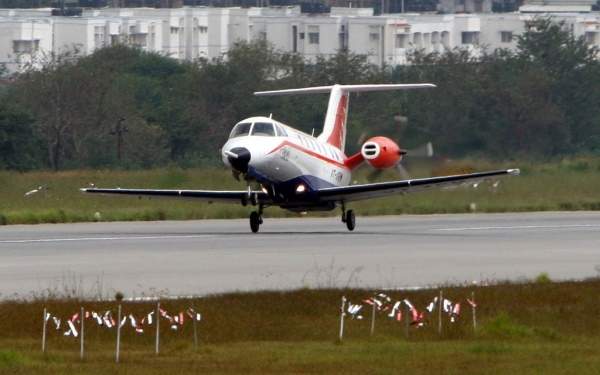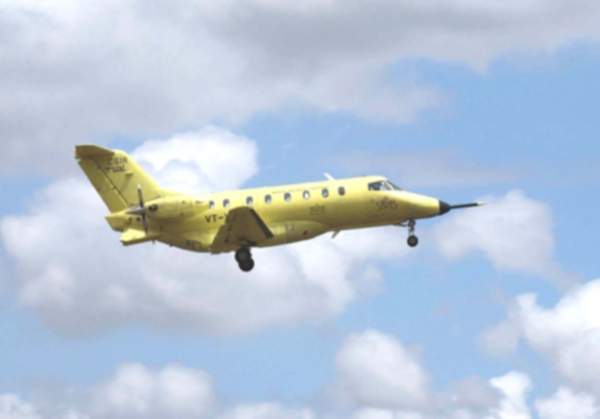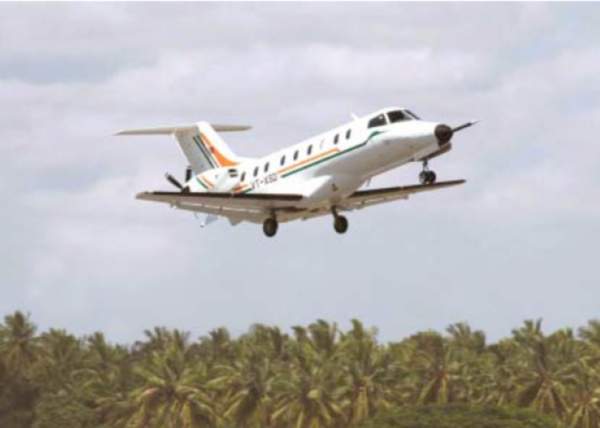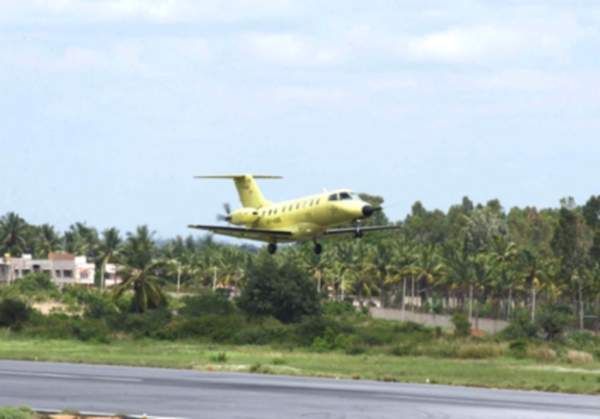The Saras is an indigenous twin-engine, multirole light transport aircraft being designed and developed jointly by Indian companies National Aerospace Laboratories (NAL) and Hindustan Aeronautics Limited (HAL) for the Indian Air Force (IAF).
The aircraft can execute passenger and freight transport, remote sensing, flight training, aerial surveillance, coastal surveillance, border patrolling and medical evacuation missions.
Two Saras prototypes have been produced to date. A third prototype of production standard is also planned to be built.
The second prototype crashed at the open space near Bidadi, situated 30km away from Bangalore, in March 2009 during flight tests. The crash killed two IAF test pilots and a flight engineer.
Orders and deliveries of Saras Light Transport Aircraft
NAL received an order from the IAF to supply 15 Saras aircraft. Deliveries will begin in 2014 and conclude in 2017.
Design of the Indian multirole plane
The Saras was designed to fly both day and night from semi-prepared airfields and grass runways even in hostile environments. It was designed to manoeuvre in hot temperatures and high altitudes. It was designed adhering to the FAR-25/23 standard regulations and can offer air taxi and commuter services.
Development
The development of the Saras started in 1991 with the collaboration of Russia which, however, opted out of the project during early stages due to financial crisis. The Centre for Civil Aircraft Design and Development (C-CADD) was commissioned in June 1995 to ramp up the Saras project.
The development was temporarily suspended in 1998 due to lack of government approval. It was recommenced in September 1999 upon receiving development approval from the Cabinet Committee on Economic Affairs in June 1999.
The first prototype (PT-1) was powered by two 850hp Pratt & Whitney PT6A-66 turboprop engines. Its maiden flight took place on 29 May 2004 at HAL Airport in Bangalore. It was originally proposed to have a weight of 4,125kg but the weight increased by about 24% to 5,118kg.
It is being upgraded with 1,200hp Pratt & Whitney PT6A-67A engines to accommodate the overweight, new propellers and modern flight control and electrical systems.
The maiden flight of the overhauled PT-1 is scheduled in 2011 and initial certification is expected in 2013. Service entry is scheduled in 2014.
The second prototype (PT2) was constructed with composite materials to decrease its overall weight by 400kg compared to that of the PT1. The PT2 was powered by Pratt & Whitney PT6A-67A engine and completed maiden flight on 18 April 2007.
Features
The Saras will feature a conventional all metallic fuselage and carbon fibre composite (CFC) wings. It will have a pressurised cabin to carry a maximum of 14 passengers. The cabin is being built to flexibly suit commuter, executive with luxury seats, executive with deluxe seats, ambulance and combi versions.
Cockpit
The glass cockpit of the Saras will be fitted with two adjacent seats for the pilot and co-pilot. It will feature two Barco MFD 6.8/1 multifunctional displays, two primary flight displays with EFIS control panel, engine instrument display and colour weather radar display. The all round glass canopy of the cockpit will offer clear visibility to the flight crew.
Avionics
The Saras will be equipped with Arinc-429 simpatico digital avionics suite which includes CH-3100 attitude and heading reference system, TDR-94 transponder, VHF-422-B communication system, ADF-462 automatic direction finder, ALT-4000 radar altimeter, VOR-432 voice over recorder and DME-442 distance measuring equipment.
Other avionics installed will be an encompass air speed indicator, GPS receiver, inertial sensor unit, automatic flight control system, radio tuning unit, cockpit voice recorder and flight data acquisition unit.
Engines
The Saras will be powered by two Pratt & Whitney Canada PT6A-67A turboprop engines rated at 895kW of output power each.
The PT6A-67A is equipped with an epicyclic speed reduction gear box to minimise the propeller noise by optimising the output speed. It also houses a single-stage centrifugal compressor, multistage axial, reverse flow combustor and a single-stage compressor turbine.
The length and diameter of the engine are 1.87m and 0.48m respectively.
A 2.65m diameter Hartzell five-bladed propeller will be fitted to each engine. The propellers can make 1,700rpm in pusher configuration.
Performance and climb rates
The Saras can climb at the rate of 10.5m/s. The maximum and cruise speeds will be 550km/h and 450km/h respectively. The range will be 920km. The ferry range and service ceiling of the aircraft will be 1,935km and 7,500m respectively. The maximum endurance will be 4 hours 45 minutes.
The Global Military Aircraft Market 2011-2021
This project forms part of our recent analysis and forecasts of the global Military Aircraft market available from our business information platform Strategic Defence Intelligence. For more information contact us: EMEA: +44 20 7936 6783; Americas: +1 415 439 4914; Asia Pacific: +61 2 9947 9709 or via email.








